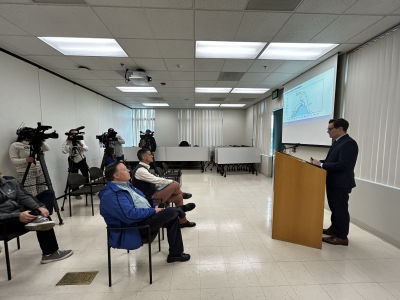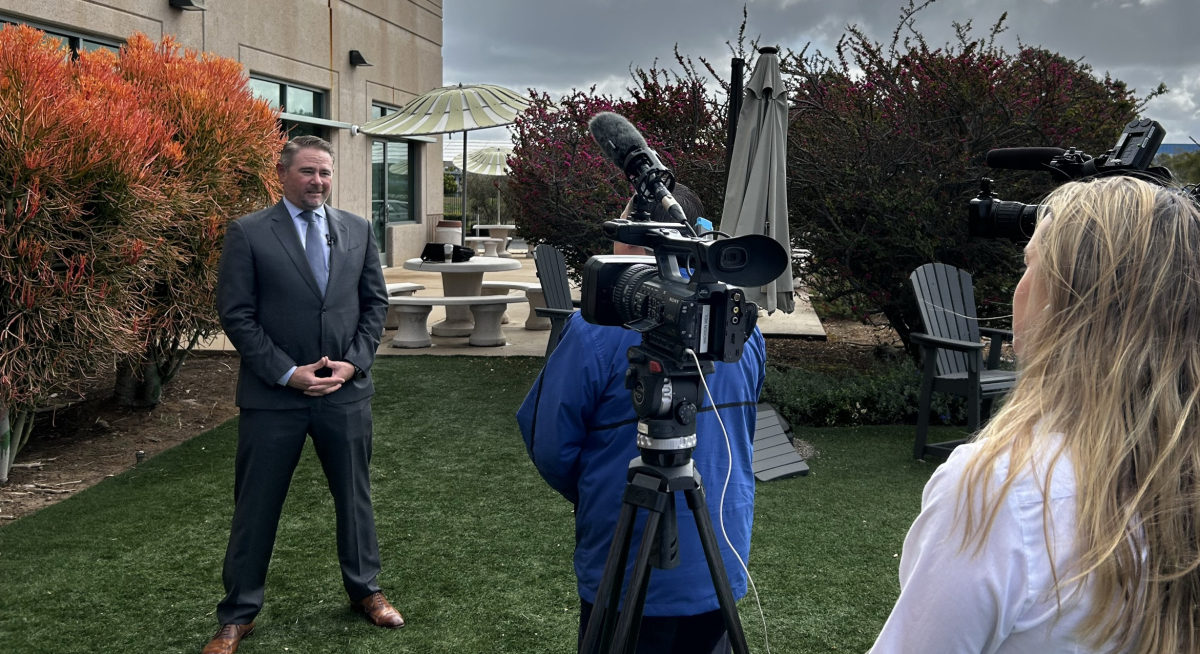Water Authority Provides Update on Supplies and Opportunities
Amid a rainy April 1, the San Diego County Water Authority held a news conference to inform the public about where the region stands when it comes to water supplies and the opportunities ahead.
“Despite a few rainy days this week, 2025 has had a drier-than-usual start. However, thanks to decades of strategic planning, the San Diego County Water Authority assures residents that the region has an ample water supply,” said ABC 10 reporter Madison Weil.
While San Diego’s rainfall total stands at less than half the yearly average, other parts of the state have seen levels much closer to normal, according to Water Authority Senior Water Resource Specialist Efren Lopez.

Senior Water Resource Specialist Efren Lopez addresses the media.
As CBS 8 reported, “Northern California has had a really rainy season so that has helped keep water levels in a good spot for the state. The Sierra Nevada snowpack is about 90 percent of the average. More snow is expected which could boost the levels slightly.”
“In San Diego County even though we’re happy to see rest of state is doing great, we don’t depend on natural hydrology like rain and snowpack,” said Lopez. “We have invested over the past 30 years on reliable drought proof supplies.”
With ample water supplies, the San Diego County Water Authority sees opportunity to help water scarce parts of the west through innovative water transfers, according to General Manager Dan Denham.
“While we can’t discuss the details of negotiations, it’s fair to say there is significant interest in buying some of our drought-resilient water – and that’s welcome news for San Diego County ratepayers,” said Denham. “Our goals are to maintain our water reliability for generations to come while at the same time controlling costs.”
As KPBS mentioned those deals “will eventually help local ratepayers. They’ve allowed the Water Authority to create a rate stabilization fund.”
“A rate stabilization fund is a mechanism for us to smooth out those rates over time. Because of the two wet years and lost water sales, we’ve had to use that rate stabilization fund to mitigate rates, or they would’ve been even higher,” Denham said.
ABC’s Weil noted “As climate change continues to affect weather patterns, maintaining a proactive approach to water management remains essential.”



